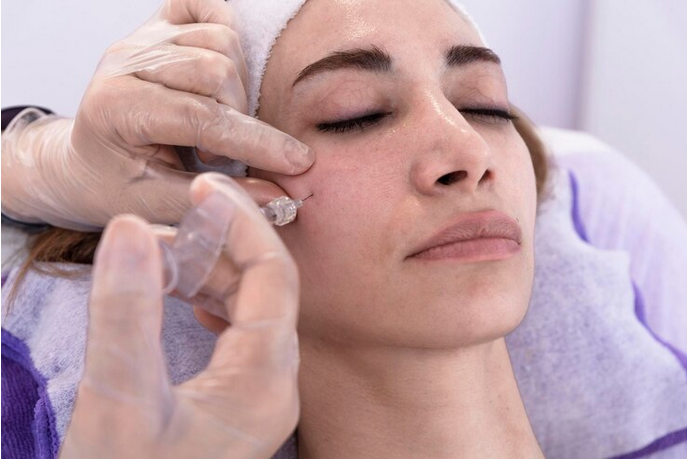Introduction to Acne Marks
Acne marks, also known as post-inflammatory hyperpigmentation (PIH), are stubborn discolorations that linger on the skin after acne breakouts heal. These marks can vary in color and intensity, ranging from pink, red, or purple to brown or black, and they can be a source of frustration for individuals striving for clear, blemish-free skin. Fortunately, there are effective strategies and treatments available to help fade acne marks and restore a smoother, more even complexion.
Understanding Acne Marks
Acne marks develop as a result of inflammation and trauma to the skin during the acne healing process. When a pimple forms, the skin's natural response is to produce melanin, the pigment responsible for skin color, as part of the healing process. This excessive melanin production can lead to the formation of dark spots or hyperpigmentation in the area where the acne lesion was present. Over time, these marks may fade on their own, but they can persist for months or even years without proper treatment.
Top Strategies for Acne Marks Removal
- Sun Protection: Sun exposure can worsen acne marks and prolong their duration, as UV rays can stimulate melanin production and darken existing hyperpigmentation. Therefore, wearing sunscreen with a high SPF (sun protection factor) is crucial for preventing further darkening of acne marks and protecting the skin from harmful UV radiation. Opt for a broad-spectrum sunscreen that offers protection against both UVA and UVB rays, and reapply it regularly, especially when spending time outdoors.
Topical Treatments: Over-the-counter (OTC) and prescription-strength topical treatments can help fade acne marks removal and even out skin tone. Ingredients such as hydroquinone, retinoids (such as tretinoin), alpha hydroxy acids (AHAs), and azelaic acid are commonly used to lighten hyperpigmentation and promote skin cell turnover. These products work by inhibiting melanin production, exfoliating dead skin cells, and stimulating collagen production, resulting in smoother, more radiant skin over time.
- Chemical Peels: Chemical peels are cosmetic procedures that involve applying a chemical solution to the skin to exfoliate the top layer and reveal fresher, more evenly pigmented skin underneath. Superficial chemical peels, such as those containing glycolic acid or salicylic acid, can help improve the appearance of acne marks by promoting cell turnover and reducing hyperpigmentation. Deeper peels, such as those containing trichloroacetic acid (TCA), may be recommended for more stubborn or severe hyperpigmentation.
- Microneedling: Microneedling, also known as collagen induction therapy, is a minimally invasive procedure that involves using a device with fine needles to create tiny punctures in the skin. This process stimulates the skin's natural healing response and promotes collagen production, leading to improved skin texture and tone. Microneedling can help fade acne marks and reduce the appearance of other skin imperfections, such as fine lines and wrinkles, with minimal downtime and discomfort.
- Laser Therapy: Laser therapy is a non-invasive treatment option for acne marks that uses focused light energy to target pigment cells in the skin. Laser treatments, such as intense pulsed light (IPL) therapy and fractional laser resurfacing, can help lighten hyperpigmentation and even out skin tone by breaking down melanin and stimulating collagen production. Multiple treatment sessions may be required to achieve optimal results, but laser therapy can be an effective option for stubborn or persistent acne marks.
Conclusion: Achieving Clearer, Smoother Skin
In conclusion, acne marks can be a frustrating and persistent issue for many individuals, but effective strategies and treatments are available to help fade them and achieve clearer, smoother skin. By incorporating sun protection, topical treatments, chemical peels, microneedling, or laser therapy into your skincare routine, you can address hyperpigmentation and improve the overall appearance of your skin. It's essential to consult with a dermatologist or skincare professional to determine the most appropriate treatment plan for your specific needs and skin type. With patience, consistency, and the right approach, you can make acne marks disappear and reveal the radiant complexion you desire.





Comments